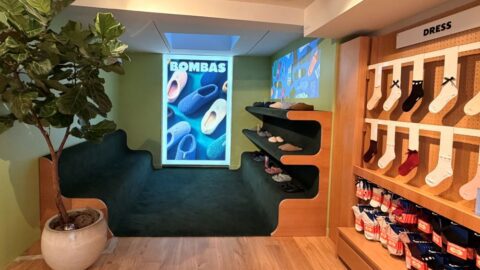Digital transformation is on pretty much every retailer’s to-do list these days. If it wasn’t deemed a priority before the pandemic, it most certainly is now with digital behaviors bred in lockdown now firmly entrenched.
But like most buzzwords, there are many misconceptions about what digital transformation is, which is why Samir Desai, Chief Digital and Technology Officer at Abercrombie & Fitch Co. said he always starts off conversations on the topic by first defining what digital transformation doesn’t mean: “It’s not optimizing a single channel; it’s definitely not just a new app or a website; and it’s not doing what you do today, in a more efficient or faster way,” he said during this year’s Retail Innovation Conference & Expo in Chicago. “[Digital transformation] is more than that. None of [the things I listed] ultimately have the impact that they’re intended to have.”
So, What is Digital Transformation?
According to Desai, true digital transformation is more about making a cultural shift than implementing any single new technology or capability. In his opinion, this process has three crucial facets:
- Removing complexity and friction to unlock speed and agility. This means “looking across the organization at how different groups are operating and [asking] how do you automate or streamline those [processes],” Desai explained.
- Creating new processes and customer experiences, or modifying existing ones, to accelerate growth and create business value, which Desai said requires “looking at the fundamentals of your business and understanding: are there new categories? Are there new revenue lines? Are there different ways to drive growth within your business and to be able to capitalize on some of that new capability?”
- Changing how work gets done at the company, which should be a natural result of the first two steps when they’re approached correctly.
How a ‘Squad’ Structure is Driving Transformation at Abercrombie
Desai practices what he preaches — cultural and organizational change was one of the first things he implemented when he joined the retailer in 2021.
“[The typical] waterfall model where the teams that are actually developing [a new] capability are the furthest removed from defining what it is that needs to be developed — that model just doesn’t didn’t make sense, so we turned it upside down,” he said.
Instead, the company has pivoted to what Desai calls a “customer-first squad model.” It’s an organizational system that was pioneered by tech companies like Spotify and is now commonplace in that sector. Squads are “agile pods” made up of no more than 12 people. “Making sure the size of the team does not exceed 10, or max 12, is a really important aspect of this,” said Desai. If the squad gets larger than that “you need to break it down into two or more teams,” he advised.
The core squad is typically made up of a digital product manager, a tech lead, a user experience and design person and engineers. Those people are focused full-time on a specific project or goal for a set period of time. The project isn’t something that’s added to their existing workload; it is their whole workload for the length of the “sprint.”
Then there are other employees outside of the squad who are involved, but in a supporting role. This includes staff from adjacent teams like data and analytics, marketing and merchandising. “These people need to be able to give input, but not on a full-time basis,” Desai said. “There’s a connective tissue between the squad and those supporting functions.”
The unlock that this kind of team structure supports is shifting the strategic focus of digital transformation initiatives. “The key cultural change that this drives is helping our business partners define the problems that need to be solved versus coming to the team with a specific solution to be implemented,” explained Desai. For example, instead of tasking the tech team with integrating a new 3D fit tech solution, a squad will be tasked with finding a way to make the fit experience on the website more effective for customers.
“The goal is not to remove merchants or any other part of the business from the process, but instead to empower the squads to really listen to the customer experience and then use data to come to the right conclusion on what should be prioritized and what [solution] is going to work,” said Desai. “I just can’t underscore enough how little the technology part of innovation and digital transformation really matters. In my opinion, it’s everything before this around the people, the culture and the operating model [that creates real change].”















